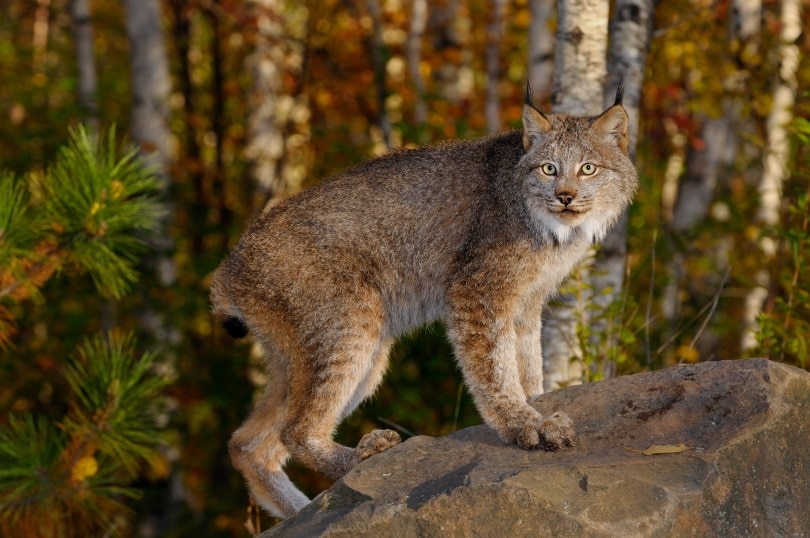New Hampshire is an American state in New England that is characterized by its quaint towns, beautiful wilderness, and jaw-dropping hikes.
It includes the White Mountain National Forest to the north, Mount Washington, and part of the Appalachian Trail. With such wild expanses, it is not surprising to find abundant and diversified fauna, such as moose, black bears, coyotes, foxes, wolves, weasels, and even wild cats in New Hampshire! However, if you’re planning a hike in the breathtaking mountains of New Hampshire in hopes of spotting a mountain lion, you might be disappointed.
Find out which species of wild cats inhabit New Hampshire by reading on!

What Species of Wild Cats Are Found in New Hampshire?
According to the New Hampshire Fish and Game Department, two species of wild cats inhabit New Hampshire: the bobcat (Lynx rufus) and the Canada lynx (Lynx canadensis).
Bobcat (Lynx rufus)
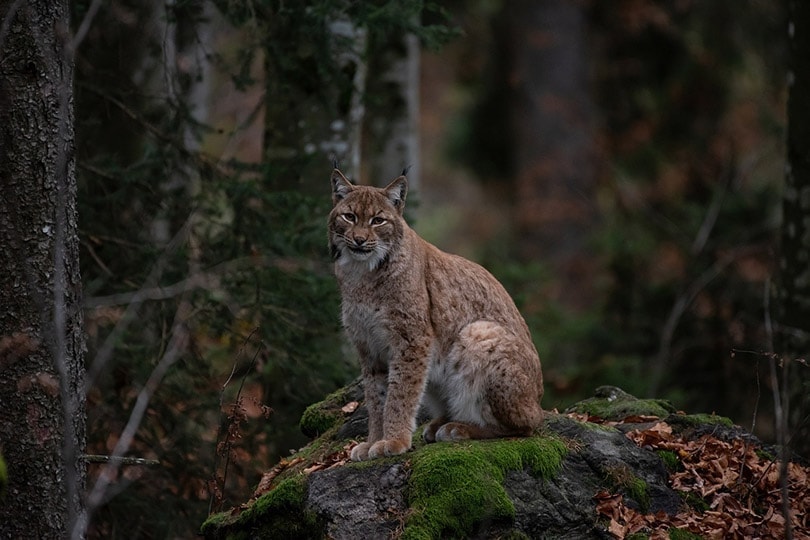
The bobcat (also called red lynx) gets its name from its short, square tail. Its coat is reddish-brown with black spots and its large ears have small tufts of hair on each end. This feline is two feet tall and weighs between 20 and 30 pounds. Thus, it is about three times the size of a domestic cat. Moreover, it is often confused with the Canadian lynx. The bobcat, however, is smaller, its legs are shorter and its tail striped with black and white in the lower part is slightly longer.
The bobcat is found throughout North America, from southern Canada to central Mexico, including the United States. This fiery feline has adapted to many different habitats like forests, swamps, deserts, and even areas near urban settings.
In New Hampshire, there is a population of several hundred individuals. It is also the only wild cat species still found in significant numbers in this state.
Canada Lynx (Lynx canadensis)
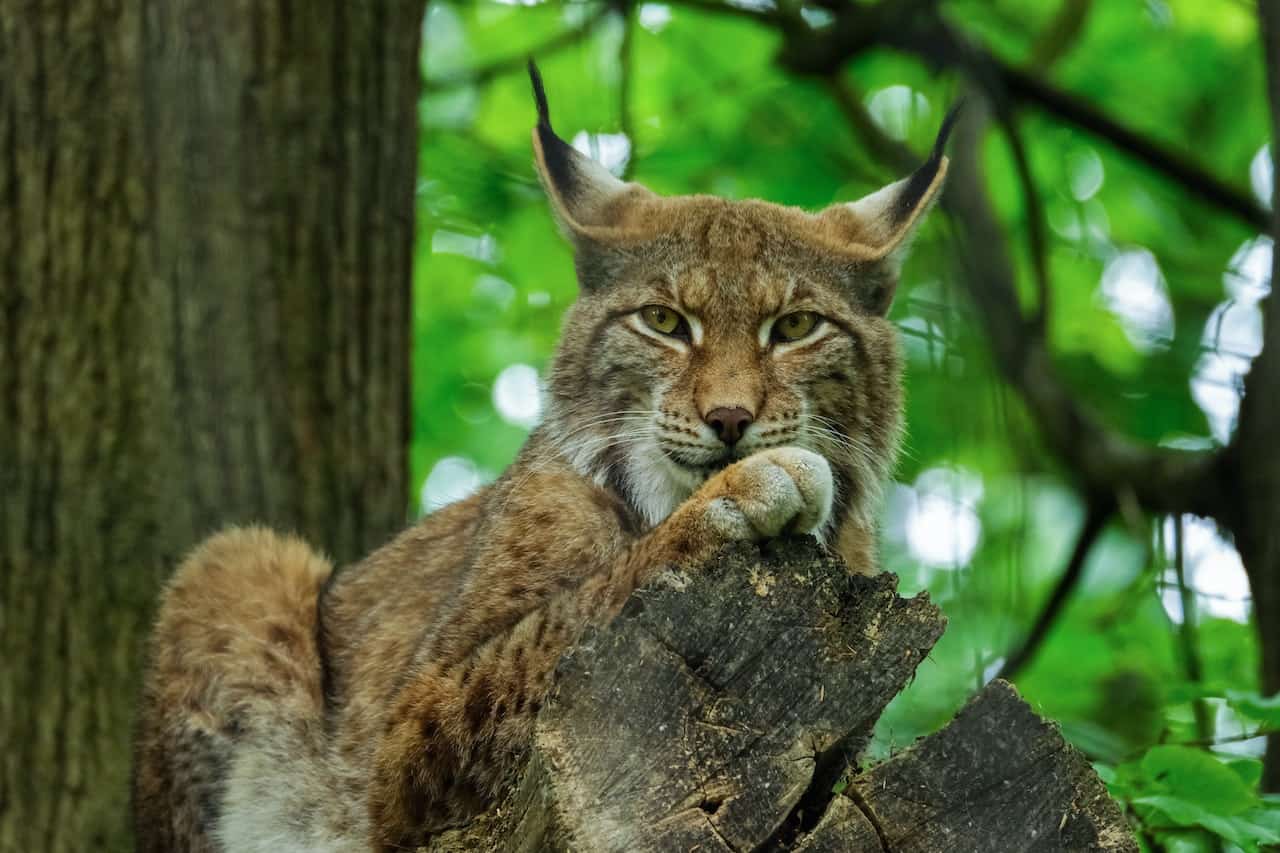
The Canada lynx is also a magnificent wild cat but much rarer in New Hampshire than the bobcat. It resembles a very large domestic cat with its short tail, long legs, and prominent tufts of hair on the ears. Its light gray winter coat is somewhat speckled with long awns, its undercoat tends to brown, and the tuft of its ears and the tip of its tail are black. Its summer coat is much shorter and reddish-brown.
Moreover, like the bobcat, the Canada lynx tends to lead a secret existence. Its activity is mainly nocturnal, and, like other wild cats, it is rarely seen in the wild. Even for trappers who have spent an eternity in areas where Canada lynx abound (especially in northern Canada), such an encounter is a singular event that is not soon forgotten.
The Canada lynx is mainly found in the boreal forest. Its range extends over most of Canada, Alaska, and some American states such as Montana and Oregon. A breeding population could also be found in northern New Hampshire until the 1950s. Unfortunately, it is now an endangered species in that state, although there have been a few sightings in recent years.

What Are the Differences Between the Bobcat and the Canada Lynx?
The Canada lynx and the bobcat are closely related. They are probably both descendants of the Eurasian lynx (Lynx lynx), which is much larger than them. There are, however, some minor differences between the Canada lynx and the bobcat:
The bobcat is smaller, and its feet are slightly shorter than those of the Canada lynx, which makes the bobcat less good at hunting in deep snow. The tip of the tail of the Canada lynx is black, while the tail of the bobcat is streaked with black bars.
In addition, bobcats can be distinguished from Canadian lynx by their very dark hind legs and by the white patch on the back of their ears.
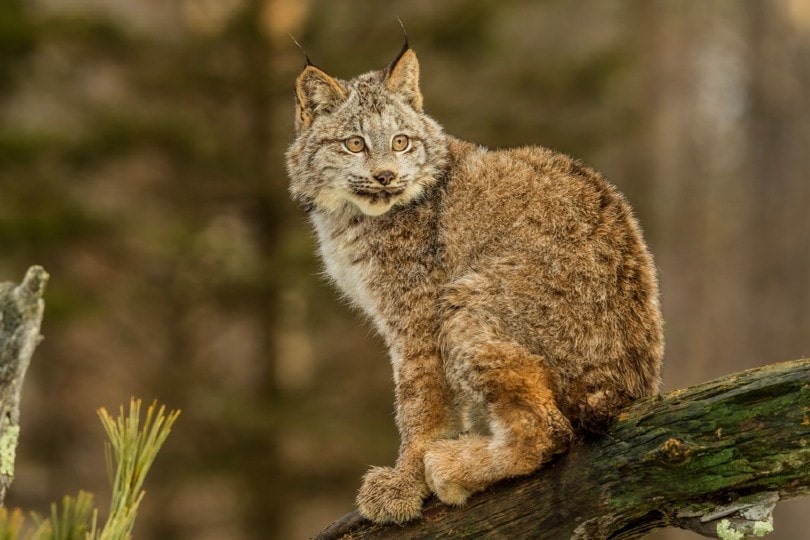
Are Bobcats Common in New Hampshire?
The bobcat has long been hunted in New Hampshire because it was known to be a ferocious predator of livestock. For more than a century, from the 1800s to the early 1970s, the population was severely depleted, until the New Hampshire Department of Fish and Game banned, in 1989, hunting and trapping of this species.
Fortunately, reports and anecdotal observations in the late 1990s and early 2000s suggested a recovery of the bobcat population in New Hampshire.
Today, bobcat sightings have become common and reported across the state. Future conservation efforts will continue to protect bobcat habitat, so these magnificent felines can continue to thrive in New Hampshire.

Are there Mountain Lions in New Hampshire?
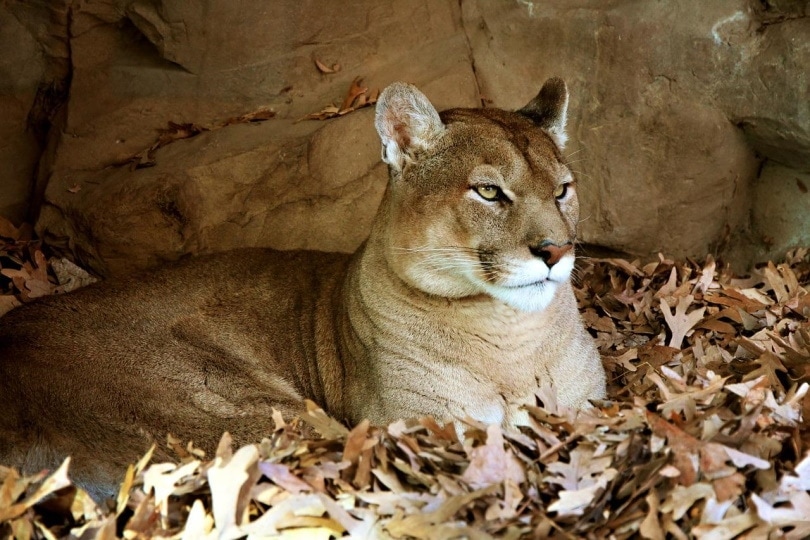
Mountain lions, also known as cougars or pumas, could be found in northeastern New Hampshire until the late 1800s. This species was known as the eastern mountain lion. However, despite numerous anecdotal reports and sightings, the New Hampshire Fish and Game Department still has no physical evidence of the presence of cougars in the state, suggesting that the species that once inhabited the Northeast is indeed extinct.
To demonstrate the presence of mountain lions in New Hampshire, the department must receive physical evidence, such as DNA (found on fur, for example), droppings, or verifiable images. To date, the reports and material “evidence” received by the department have not validated the presence of cougars in this state.
- You may also be interested in: Are There Wild Cats in Massachusetts

Final Thoughts
Thanks to its vast expanses of wilderness, New Hampshire is home to diverse and spectacular wildlife. The bobcat, however, is the only wild cat species still found in abundance in this state. But, thanks to habitat conservation efforts, the Canada lynx also seems to be making a timid reappearance in northern New Hampshire. However, despite multiple reports over the past few years, the mountain lion appears to be well and truly extinct in the White Mountains of NH.
Featured Image Credit: Reimar, Shutterstock
